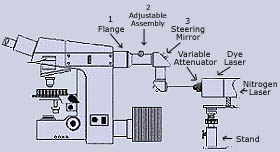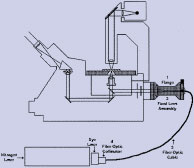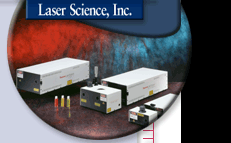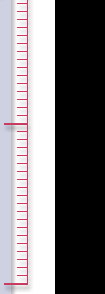
Nitrogen Lasers One of our pulsed nitrogen lasers is at the heart of a microbeam system. These lasers deliver 4 nsec pulses at 337 nm. We offer two models: the research oriented VSL-337ND-S with pulse repetition rates up to 60 Hz and the ultracompact VSL-337 with repetition rates up to 20 Hz. Both are completely self-contained with no flowing gas mixtures or circulating coolants. When a nitrogen laser is used as the microbeam source, UV transmitting optics are selected for the rest of the system. Dye Lasers A nitrogen laser pumps a dye laser to produce pulsed laser light in the spectral range of 360 nm to 950 nm. This broad spectral range offers radiation that is easily transmitted by standard microscope optics along with extreme flexibility in selecting a wavelength that has the desired effect on the microsample. We offer tunable and fixed wavelength dye lasers for both nitrogen laser models. Our dye lasers are self-contained with no flowing dye solutions. Dyes typically may be tuned over (40-60) nm and solutions in standard 1 cm spectrophotometer cuvettes are easily interchanged for different spectral output. Laser to Microscope Adapters These adapters couple the output from either the UV nitrogen laser or the visible dye laser directly through the EPI port into the microscope. We developed separate optimized laser to microscope adapters for focused beam and full field illumination experiments. For focused beam applications such as ablation, the laser is coupled directly to the microscope through a lens assembly producing small spot sizes with extremely high peak power densities. For example, a 440 nm beam exiting the DYE-110 dye laser can be focused to better than a 10 µm spot with an energy density of 13 kJ/cm2. As illustrated in Figure 1, the adapter for focused beam applications consists of four basic parts: (1) a flange attaching the adapter to the microscope, (2) a barrel housing an adjustable lens assembly to focus the laser beam onto the sample, (3) beam steering mirrors to center the focused beam in the field of view, and (4) an adjustable laser stand for aligning the beam to the adapter.
Laser to Microscope Adapters for Specific Microscopes We have built adapters for many types of microscopes for both focused beam and full field illumination applications. As the optical properties of microscopes vary, we must identify the correct optical elements and their relative positioning for each microscope. When a potential user has a microscope we have not worked with, we provide a Microscope Measurement Kit and request that a few straightforward measurements be made on the microscope that will become part of the laser microbeam system. We can then specify the proper lens assembly for the adapter for that specific microscope. Options As desired, a researcher may enhance a laser microbeam system with a variety of accessories. Remote triggering of the laser is achieved through a pulse generator that can be driven with an optional foot pedal. When less energy is desired, a variable attenuator decreases dye laser output to 2-55% of the original. An adjustable fiber optic collimator offers X-Y-Z adjustments for precision coupling of lasers and fiber optics. We offer an assortment of standard and custom fiber optic cables. Various dye solutions cover the spectral range of 360 nm to 950 nm. Coumarin 440 laser dye for ablation is the most widely used dye solution. For increased flexibility, a triple lighthouse adapter attaches a variety of light sources to the EPI port of most microscopes. The researcher may switch rapidly and easily from one light source to another. |
| © 2000-2026 Laser Science, Inc.
All Rights Reserved |
|
|
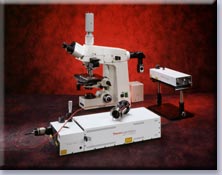 The
Modular Laser Microbeam System
The
Modular Laser Microbeam System